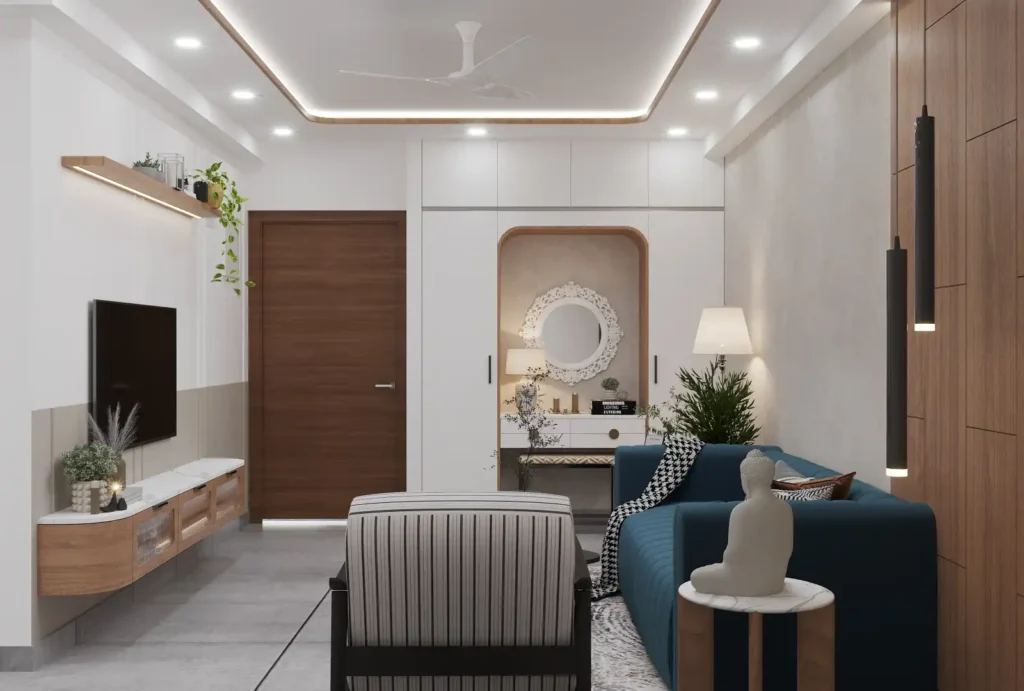Introduction
Home interior design is an exciting and creative way to enhance the functionality and aesthetics of your living space. Whether you’re new to the world of interior design or have a bit of experience, embarking on your interior design journey can feel overwhelming. With so many choices, styles, and design elements to consider, it’s essential to have a plan.
In this article, we’ll provide a step-by-step guide on how to get started with home interior design, covering key aspects such as planning, choosing a style, working with professionals like an best interior designer in Bangalore, and tips for creating a harmonious space.
Understanding Interior Design Basics
Interior design is more than just making a space look good; it involves a careful balance of functionality, aesthetics, and comfort. Here’s a brief breakdown of the core elements of interior design:
-
Space Planning: One of the first steps in interior design is planning the space. This includes understanding the layout, the furniture placement, and the way natural light affects the room.
-
Color Scheme: Colors have a significant impact on the mood of a room. A color scheme sets the tone and can make a room feel larger, cozier, or brighter.
-
Furniture and Fixtures: Choosing the right furniture is essential for both comfort and style. It’s important to select pieces that complement your chosen design style and the available space.
-
Lighting: Lighting is critical in any design project. It not only serves a functional purpose but also creates ambiance and highlights architectural features.
-
Textures and Materials: The choice of materials—such as wood, stone, or fabric—helps add depth and interest to your interior design.
How to Start Designing Your Home
Starting your home interior design project doesn’t require a huge budget or an extensive knowledge of design principles. It’s about taking small steps and making thoughtful decisions. Here’s how you can get started:
1. Set a Budget
Before diving into design decisions, it’s important to establish a budget. This helps you prioritize which areas need more attention and where you can save. Your budget will determine the type of furniture, materials, and professional services you can afford.
2. Research Design Styles
There are various interior design styles to choose from, each with its own characteristics and charm. As a beginner, it’s helpful to research different design styles to find what resonates with you. Some of the most popular styles include:
-
Modern Design: Clean lines, neutral colors, and a focus on functionality.
-
Contemporary Design: A constantly evolving style that focuses on the present day.
-
Traditional Design: Rich colors, classic furniture, and elegant patterns.
-
Minimalist Design: A more restrained style that focuses on simplicity and functionality.
-
Bohemian Design: An eclectic mix of colors, patterns, and global influences.
An interior designer in Bangalore can help you refine your preferences and suggest a style that fits your space and lifestyle.
3. Create a Mood Board
A mood board is a collection of images, color swatches, and materials that represent the style and atmosphere you want for your space. This step is essential for visualizing your ideas and keeping your design focused. You can use Pinterest or physical boards to collect your thoughts.
4. Start with a Plan
Once you’ve settled on a style, start planning the layout of your space. The flow of a room is essential, so make sure the furniture arrangement allows easy movement. Draw out a basic floor plan of the room, and consider the size and placement of furniture.
When creating a plan, keep these tips in mind:
-
Leave enough space for walking paths.
-
Focus on creating focal points such as a statement piece of furniture or artwork.
-
Consider the function of each room – for example, the living room should be comfortable and social, while the bedroom should be restful.
5. Choose a Color Palette
Color plays a critical role in the overall feel of a room. Once you’ve chosen a design style, pick a color palette that complements it. Neutral tones work well in almost any space, but adding pops of color through accents like pillows, curtains, and artwork can elevate the look. If you’re unsure, consult with the best interior designer in Bangalore for suggestions based on current trends and the functionality of your space.
6. Invest in Key Pieces
After you’ve planned your layout and chosen a color palette, start investing in key pieces of furniture. Prioritize quality over quantity. Select pieces that are both functional and aesthetic, such as a comfortable sofa, sturdy dining table, or a statement chair.
7. Lighting and Accessories
Lighting can make or break a design, so choose fixtures that not only illuminate but also enhance the ambiance. Consider layering lighting—ambient, task, and accent lights—to add depth. Ceiling lights, floor lamps, and table lamps are all essential to create a well-lit room.
Once you’ve settled on the larger design elements, add accessories like rugs, cushions, throws, and art to complete the look. These elements bring character to a space and give it a personalized touch.
Working with an Interior Designer in Bangalore
If you’re feeling overwhelmed or want to ensure that your space looks its best, working with a professional interior designer can be a great investment. A skilled interior designer in Bangalore can guide you through the process, from space planning to selecting furniture and finishes. Here’s why hiring an expert might be beneficial:
-
Expertise: Interior designers have the knowledge and experience to transform your space into something beautiful and functional.
-
Time-saving: They can handle the technical aspects of the design, such as sourcing materials, hiring contractors, and managing timelines.
-
Customization: A designer will tailor the design to suit your preferences, needs, and lifestyle.
When choosing an interior designer, make sure to review their portfolio and consult with them about your ideas and vision. An experienced best interior designer in Bangalore will be able to turn your concepts into reality, ensuring that every detail is well-executed.
Final Thoughts
Interior design for beginners doesn’t have to be complicated. With a little planning, creativity, and guidance, you can transform your home into a stylish and functional space. Start by understanding the basic elements of interior design, setting a budget, and working with a professional if needed. Remember, the key is to enjoy the process and let your personality shine through your home’s design. Whether you’re designing your living room or your entire home, every step you take brings you closer to creating a space you’ll love to spend time in.



